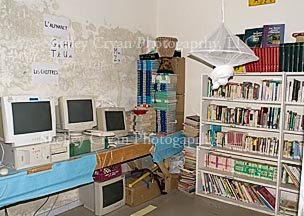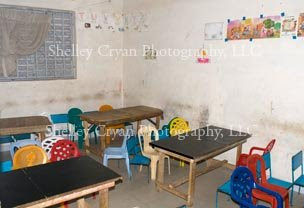
I took a photo of the Norwalk High School girls varsity basketball team to run full-page on the cover of a local paper's winter ports preview section. The team had posted an impressive record last season, and the sports editor figured they'd be a good team to highlight. Turns out the captains are also good sports, too.
We did the photoshoot moments before their first scrimmage of the season. It worked out great, since the players were all suited up already. I had scouted the location earlier, and had come up with this courtyard in the school. It had three things going for it: I liked the warm lights in the background, it was close to the gym so we'd maximize the short time we had together, and since it was freezing outside, no one else was around. I used a couple battery-powered strobes in umbrellas to light 'em.
We did a couple of traditional poses first. The toughest part was getting them all to be serious, since we all had a hard time not laughing. The photo above gives you an idea. It works OK. We had a couple of minutes before the game started, so we figured we'd try something different. Sometimes the best -- and most fun -- shots come when I know I have a "safe" shot in the camera already.
The players climbed up on a rock in the courtyard, figuring we'd get a "we're tall and tough" pose, with the added benefit of getting that nice blue sky in the background. While they were getting ready, I snapped this unposed frame for kicks:

But we weren't quite done. We were having such a good time together, that I asked them if they might be willing to jump off the rock. I was a bit nervous, because I sure didn't want anyone hurting themselves. But they insisted they could do it. We talked through how everyone should position themselves. We only had time for two shots.
The first shot we got a hand out of the frame. Below is the second shot -- my favorite and the girls' favorite from the whole session. It's the one that ran full page.















































